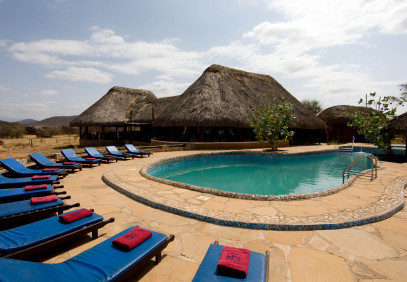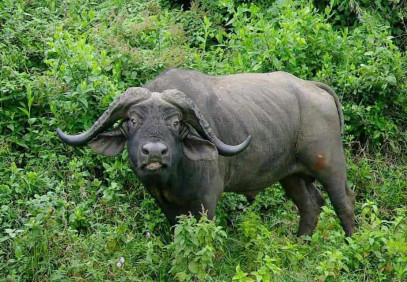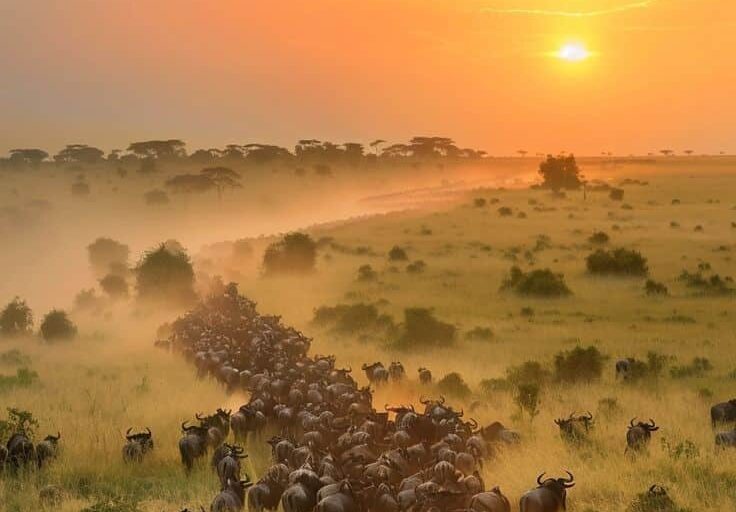Amboseli National Park
Amboseli National Park, covering an area of 392 km2, has a unique ecosystem with a mixture of swamps and arid areas. Acacia woodlands, marshlands, open plains and rocky-thornbush are four of the five naturally occurring wildlife habitats in Amboseli as well as five swamps, with Enkogo Narok and Logenya swamps always surrounded by wildlife.
Amboseli’s famous herds of elephants are a big draw to the park together with the stunning view of Kilimanjaro as a backdrop. Africa’s highest free-standing mountain is situated just south of the Kenyan border in Tanzania and is visible for miles around. The view from Amboseli is iconic and has been seen in countless documentaries and films.
The word Amboseli derived from the Maa word ‘Empusel’ means salty or a dusty place. Maa is the language of the Maasai, who have inhabited the region for centuries, and the translation has led to many calling Amboseli National Park, the Land of the Dust.
The History of Amboseli National Park
Before the Maasai migrated to the Amboseli region, the land was occupied by the Chagga and Kamba tribes, some 1,500 years ago. Until the establishment of Amboseli National Park, the Masaai lived alongside the wildlife but their cattle grazing and water gathering disrupted the animals, making them flee to areas unsuitable for their survival.
The government had a hard choice to make and the area was designated as a reserve, meaning the Maasai people had to leave the area. The wildlife slowly returned to Amboseli and flourished once the Maasai and the cattle left the land. In retaliation for being displaced, the Maasai hunted and killed the rhinos and lions in the national park. To stop this, the government moved the remaining rhinos, but their actions had a lasting effect on the lion populations.
To appease the Maasai people, the government has granted them access to the wells for their water supply, and today the Maasai people have learned to co-exist with the wildlife in the national park.
- 1883: Jeremy Thomspon, a British Explorer and Geologist, first came across the Amboseli region and was amazed by the wildlife as well as the habitat.
- 1906: The region covered by today’s Amboseli National Park was included in the then-established Maasai Amboseli Game Reserve.
- 1948: After World War II, Maasai Amboseli Game Reserve became the Amboseli National Reserve with its northern boundaries extended.
- 1961: The Maasai and Kajiado county district managed Amboseli Game Reserve, which initially covered an area of 3,260 km2.
- 1974: Kenya’s first president, Jomo Kenyatta, declared the establishment of Amboseli National Park to preserve its unique ecosystem and handed the management to Kenya Wildlife Service. At the same time, a large portion of the park was excised, which left the current 392 km2 park area.
- 1991: Amboseli was added to the UNESCO’s World Heritage list.
- 2005: Mwai Kibaki, the governing Kenyan President, handed the control of Amboseli National Park to the Olkejuado county council and the Maasai.
Wildlife In Amboseli National Park
Amboseli is renowned for its big tusked herds of elephants and because they have been protected these elephants are quite calm when encountered during game drives. Other than the elephants, the park also has an abundant presence of giraffe, hippos, buffaloes, zebras and wildebeest.
Amongst the predatory species, African wildcats, black-backed jackal, black-eared foxes, cheetah, lions, spotted hyenas are frequently spotted. After the Maasai targeted the rhinos, the remaining rhinos were relocated so at present Amboseli has no rhinos. Apart from rhinos, the park has all the other big five animals.
With over 400 recorded bird species, Amboseli National Park is a great bird-watching destination. It has 40 predatory bird species, including African fish eagle, black-shouldered kite, lanner falcon, martial eagle, pygmy falcon and secretary bird. The park is one of the few locations in the world where avid bird watchers can catch sight of the endangered Egyptian vulture.
Camps in Amboseli National Park
- Tortilis Camp: Named after the acacia tortilis woodland where the camp is situated. The jewel of Amboseli National Park this area is known for its unparalleled views of Mount Kilimanjaro as well as the famous elephant population.
- Campi ya Kanzi: Located below the Chyulu Hills, this is a well-known, eco-friendly and luxury safari camp with solar-powered electricity and hot water. They also recycle used water from wildlife ponds and rains. Camp activities include bush walks and game drives and it has great views of Mount Kilimanjaro.
- Kibo Safari Camp: Located at the foot of Mount Kilimanjaro, the camp is also close to a Maasai village. It offers guests an opportunity to visit the village, view cattle drives and game drives as well as fantastic views of Mount Kilimanjaro and a great spot for birders.
- Kilima Safari Camp: It is located in the heart of the Amboseli National Park, right next to the Kimana Gate Park entrance. Equipped with amenities such as tented accommodation, a swimming pool and massage centre, the camp has great views towards Mount Kilimanjaro and the Kilim area has a larger population of elephants.
When to visit Amboseli National Park
For wildlife viewing, the dry summer months of January and February and June to October are ideal for visiting Amboseli National Park. The best time to visit the park to witness the beauty of Mount Kilimanjaro from the park is in the rainy season, from November to May.
The months of November to April bring the migratory bird population to the Amboseli National Park. Unfortunately, the rainfall during these months can also prove disruptive for bird-watchers. Otherwise, the park is a year-round destination for bird-watchers.
Login to your account
Register as a traveller if you are looking for deals
Register as a travel partner if you offer amazing safaris
You May Also Be Interested In...

Chyulu Hills National Park
Dubbed the "Green Hills of Africa", the breathtaking scenery is the central attraction of the Chyulu Hills National Park located in the Makueni county of southeastern Kenya. Established in 1983, Chyulu...

Nairobi National Park
Typically, most wildlife reserves and national parks are located in remote locations away from the hubbub of cities. However, Nairobi National Park, one of Kenya’s popular safari destinations, bucks...

Buffalo Springs National Reserve
Buffalo Springs National Reserve and Samburu National Reserve share an ecosystem and are located on the opposite banks of the Ewaso Nyiro River. Buffalo Springs covers an area of 131 square kilometres,...

Tsavo East National Park
Tsavo East National Park covers 13,700 square kilometres of Kenya, which is nine times the size of Masai Mara National Reserve. Tsavo National Park refers to both Tsavo East and West National Park, which...

Samburu National Reserve
Covering an expanse of 165 km2 along the banks of river Ewaso Ng'iro, Kenya stands an iconic safari destination; the Samburu National Reserve. The park is situated in the vicinity of the Buffalo Springs...

Meru National Park
Meru National Park, covering an area of 870.44 km2, is a remote national park in Kenya, Africa. This wild and beautiful park has diverse landscapes, which include open plains bordered by riverbanks, slopes...

Maasai Mara National Reserve
The Maasai Mara National Reserve in the southwest of Kenya covers an area of 1,510 square kilometres and consists mainly of open grasslands with clumps of acacia trees. One of Africa's most famous national...

















